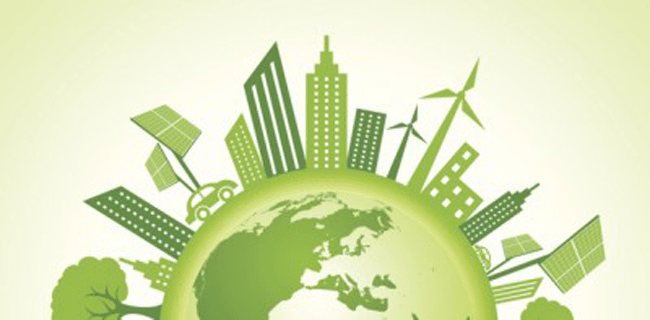Institutional owners of office buildings continued to pursue green building certifications in the 30 largest U.S. markets during 2015.
Phoenix ranked No. 20 out of the 30 office markets analyzed for the green office study. Phoenix’s ranking slipped two spots from the previous year, and the square footage percentage of green space slipped from 30.4 percent to 29 percent.
In Phoenix, since Q4 2015, about 8.45 percent of Phoenix’s offices qualified with either an EPA ENERGY STAR label or USGBC LEED certification.
Green building across the country is continuing an upward trend over the past decade, though, with green certifications now being held by 11.8 percent of all surveyed buildings, representing 40.2 percent of all office space.
Both figures are slightly above last year’s results, according to the third annual Green Building Adoption Index study by CBRE Group, Inc. and Maastricht University. “Green” office buildings in the U.S. are defined as those that hold either an EPA ENERGY STAR label, USGBC LEED certification or both.
After placing second on the Green Building Adoption Index the two prior years, the San Francisco market claimed the top spot with 73.7 percent of its space qualified as green certified. Chicago claimed the second spot, narrowly trailing the leader at 72.3 percent and Minneapolis fell from the top into third spot at 60.6 percent. Houston, Atlanta and Los Angeles all also achieved more than 50 percent green certification in their office markets.
“While the rate of growth in ‘green’ buildings has slowed modestly, our latest study underscores that in most major markets, sustainable office space has become the ‘new normal,’” said David Pogue, CBRE’s Global director of Corporate Responsibility.
The overall results of the study do show that the while the uptake of green building practices in the 30 largest U.S. cities continues to be significant, the rate of adoption is slowing. In 2014 the total square feet of green office space in the top 30 markets was 39.3 percent compared to the latest rate of 40.2 percent.
“This likely reflects the fact that only a certain fraction of the building stock can obtain a green or energy-efficiency certification,” said Dr. Nils Kok, associate professor in Finance and Real Estate, Maastricht University (NL). “Additionally, we believe that some buildings that were previously certified did not renew their certification in 2015. This does not necessarily mean that the energy use of these buildings has changed, but that some owners and managers may choose not to spend the time or expense to reapply for certification every year.”
A new feature of the 2015 study is a geographic mapping platform that highlights the name, location and details of the specific green certification for each building in all 30 markets.
Executed in close collaboration with the U.S. Green Building Council (USGBC) and CBRE Research, this is the third release of the annual Green Building Adoption Index. Based on a rigorous methodology, the Index shows the growth of ENERGY STAR- and LEED-certified space for the 30 largest U.S. office markets, both in aggregate and in individual markets, over the previous 10 years.




